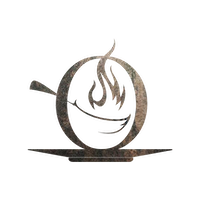Kitchen Confidence Volume 11 | The Wine Issue
How to choose, pair, and pour like a master sommelier.
Holiday picks curated by Mandy Rensel | Owner & Curator of Persephaure
Welcome
Wine isn’t complicated—it’s curious. Every bottle answers three questions: Where am I from? Who raised me? What am I for? Know those, and pairing becomes play, shopping gets easy, and the glass in your hand suddenly matters a lot.
This volume gives you the essentials: how wine is made (and why it tastes the way it does), plug‑and‑play pairing rules, why stemware changes everything (featuring Persephaure), rare‑gem bottles you can actually find at a quality grocer—with price points—a dead‑simple holiday Champagne cheat sheet, a mainstream Capsule Cellar, and an upgraded “What to ask your wine grocer” script. Simple, thoughtful gifting included.
1) Production 101 — how flavor is built
Place sets the frame. Climate, elevation, and soil decide ripeness, acidity, and aromatics.
Harvest timing = tone. Earlier picks → brighter, leaner; later picks → riper, fuller.
Skin contact sets color & grip. Whites are typically pressed off skins; reds soak with them for color and tannin.
Fermentation shapes style. Cool stainless = crisp, pure fruit. Oak & warmer temps = texture, spice. Malolactic softens sharp acidity into creamier notes.
Élevage (aging) is the voice coach. Stainless = clarity; neutral oak = roundness; new oak = toast and structure. Lees contact adds silk and savor.
Practical read: High acid cuts fat; tannin loves protein; oak wants smoke/umami; bright, unoaked wines light up herbs and citrus.
2) Pairing made simple (and delicious)
Five rules you’ll actually use
Match intensity. Delicate dish → lighter wine; bold flavors → fuller wine.
Salt loves bubbles + acid. Oysters, fries, fried chicken → Champagne/Crémant/Cava.
Spice likes a little sweetness + lower alcohol. Thai/Sichuan → off‑dry Riesling or Moscato d’Asti.
Fat/protein tame tannin. Steak, hard cheese → Cabernet, Bordeaux, Barolo.
Dessert needs sweeter wine. Fruit tart → late‑harvest Riesling or Sauternes.
Plug‑and‑play ideas
Seared scallops + pea purée + chanterelles → Blanc de Blancs Champagne or dry Loire Chenin.
Salmon with cherry reduction → Oregon Pinot Noir or Etna Rosso (Nerello Mascalese).
Crispy Brussels + manchego rosemary butter → Fino Sherry or Grüner Veltliner.
Peach‑bourbon flambé → Moscato d’Asti or Demi‑Sec Champagne.
3) Why the glass matters (Persephaure spotlight)
Aromas carry flavor. The bowl controls surface area (how fast aromas rise), the rim directs the wine (where it lands on your palate), and headspace concentrates what you smell. Ultra‑thin rims disappear; ultra‑light crystal lets texture speak.
Meet Persephaure
Persephaure glasses are hand‑blown and ultra‑light, with beautifully balanced bowls, a precise, thin rim, and graceful stems. The result is clarity of aroma, purity of texture, and an effortless feel in the hand—exactly what curious wine drinkers and serious collectors want.
4) Feature: The Persephaure Pinot Luxe (hero glass)
Designed for expressive, high‑aromatic reds—Pinot Noir, Nebbiolo, Grenache, Gamay—the Pinot Luxe elevates nuance and silk.
Why it works
Generous, high‑shouldered bowl gives aromatic wines room to bloom without blowing off.
Gently tapering chimney collects florals and red fruit while moderating alcohol heat.
Ultra‑thin, polished rim delivers a seamless first sip—no bulky lip to distract your palate.
Weightless balance keeps long tastings fatigue‑free and service elegant.
Versatility: also gorgeous with oak‑aged whites (Chardonnay, Chenin) and delicate, savory reds.
Pinot Luxe Persephaure | Hand Blown Ultra Light Wine Glass
Explore Persephaure Wine Glasses at www.persephaure.com
5) Rare‑gem bottles you can actually find (with price points)
Approximate US retail; availability varies by market.
Crisp & mineral whites
Muscadet Sèvre‑et‑Maine Sur Lie (Loire) — $15–22
Assyrtiko (Santorini) — $25–40
Godello (Valdeorras) — $18–28
Grüner Veltliner (Kamptal/Wachau) — $16–24
Picpoul de Pinet (Languedoc) — $12–17
Textured & aromatic whites
Chenin Blanc (Montlouis/Savennières) — Montlouis $22–35; Savennières $35–60
Verdicchio dei Castelli di Jesi (Marche) — $14–22
Elegant, brighter reds
Mencía (Bierzo) — $16–24
Blaufränkisch (Burgenland) — $18–28
Etna Rosso / Nerello Mascalese (Sicily) — $22–35
Trousseau or Poulsard (Jura) — $28–45
Cru Beaujolais (Morgon, Fleurie) — $20–30
Smart sparkling
Crémant (Loire/Jura/Alsace) — $18–28
Franciacorta (Lombardy) — $28–45
Corpinnat (Penedès) — $24–40
6) Holiday Champagne cheat sheet (choose fast, pour with confidence)
Sweetness key (on the label)
Brut Nature / Dosage Zéro — razor‑dry.
Extra‑Brut — very dry, racy.
Brut — classic, flexible with food.
Grape style
Blanc de Blancs (all Chardonnay) — chalky, citrusy, precise.
Blanc de Noirs (Pinot Noir/Meunier) — rounder, red‑fruited, powerful.
Insider codes
RM = grower Champagne (estate‑made).
NM = négociant/house Champagne (often blends).
Pro move for parties
Choose magnums for slower aging and a longer, creamier pour.
Serve in a tulip‑shaped Champagne or white‑wine glass (not a skinny flute).
Ideal serving temp: ~50–55°F for fine Champagne; everyday bubbly can go cooler.
7) Service notes from your sommelier
White wines: 44–54°F (cooler for crisp styles, slightly warmer for textured/oaked).
Light reds: 53–59°F; full reds: 58–62°F.
Sparkling: 38–50°F (quality determines how warm you can serve).
Open Champagne quietly: 45° angle, thumb on cork, twist the bottle (not the cork).
Leftovers: Re‑stopper sparkling and refrigerate; still wines keep better with a vacuum/inert‑gas stopper.
8) The 90‑Second Tasting Ritual
See: Tilt and note color/clarity.
Swirl: 5–7 gentle circles to wake aromatics.
Smell: Three short sniffs; name fruit, floral, spice, earth.
Sip: One small, one normal; note texture (silk, chalk, grip) and finish length.
Say: One‑line snapshot (e.g., “Bright cherry, tea leaf, silky, medium finish”).
9) Capsule Cellar — 6 mainstream varietals that cover 90% of dinners
(Keep these on hand; mix regions to your taste.)
Sauvignon Blanc — New Zealand (Marlborough) or California; $14–25
Chardonnay (unoaked to lightly oaked) — California, Oregon, Chile; $15–30
Pinot Noir — Oregon/California/Chile; $18–35
Merlot — Washington/California/Chile; $14–25
Cabernet Sauvignon — California/Washington/Chile; $18–35
Brut Sparkling (Traditional Method) — Cava/Crémant/US; $16–28
Upgrade path: add Dry Rosé ($12–20) for year‑round versatility.
10) Holiday Meal Pairing Map
Apps (oysters, shrimp cocktail): Blanc de Blancs Champagne / Muscadet
Turkey & herb stuffing: Cru Beaujolais / Oregon Pinot Noir
Glazed ham: Off‑dry Riesling / Blanc de Noirs Champagne
Roasted root veg & mushrooms: Etna Rosso / aged Chenin (sec/tendre)
Pies & tarts: Moscato d’Asti / late‑harvest Riesling
11) Party‑Pour Math (so you never run out)
Sparkling reception: 1 bottle per 3 guests per hour
Seated dinner (2–3 courses): 1 bottle per 2 guests
All‑evening grazing: ~1.5 bottles per guest total
Magnums: count as 2 standard bottles but pour smoother and feel celebratory
12) What to ask your wine grocer (smart shopper script)
Use these exact prompts. Give a price window and dish so staff can nail the recommendation.
General openers
“I’m serving [dish] and want [crisp / aromatic / rich / low‑alcohol / low‑oak]. Budget: $20–25. What do you love right now?”
“Do you have a grower Champagne or a traditional‑method sparkler around $30–45 for the holidays?”
“What’s your best value Pinot Noir under $25 for salmon and roast chicken?”
“Point me to a crowd‑pleasing Cabernet around $20–30 that’s not too oaky.”
“Looking for a seafood white with minerality under $20—Muscadet, Picpoul, or your favorite equivalent?”
“We’re doing spicy takeout—any off‑dry Riesling or Moscato d’Asti around $15–22?”
Follow‑ups that pros use
“Is this the producer’s entry label or a single‑vineyard? How does it change the style?”
“What vintage drinks best now for this region?”
“If I spend $10 more, what’s the biggest quality jump?”
“Any bottles you’d personally pour for a dinner party at $20–30?”
Practical requests
“Please chill this sparkling/white while I shop.”
“If a bottle is corked or flawed, can I bring it back?” (Most good shops say yes.)
13) Simple, thoughtful holiday gifting
Curated by Mandy Rensel
Pinot Luxe Pair — Two Persephaure Pinot Luxe glasses + a favorite Oregon Pinot Noir.
Pinot Luxe Quartet — Four stems for effortless dinner parties.
Persephaure Gift Card — Let them choose their stemware and timing.
Shop gifts now at www.persephaure.com
14) More pro tips (quick wins that impress)
Label decoder: Brut Nature/Extra‑Brut/Brut = dryness levels; Estate/Grower often = more site character; Sur Lie(on lees) = more texture; Classico/Riserva = regional quality cues (varies by country).
Open & decant timing (guideline):
If a wine tastes “off”: Look for cork taint (musty cardboard), excess oxidation (bruised apple, flat), or volatile acidity (nail‑polish remover). Don’t hesitate to return it.
Storage (short‑term): Cool, dark place, on its side (corked bottles). Avoid heat spikes and bright light.
Final sip
Start with production clues, pour into a glass that lets the wine sing, and choose bottles that make dinner more fun. The rest is just practice—and a little curiosity.
Experience Persephaure Hand Blown Wine Glasses at www.persephaure.com
Pinot Luxe is in stock now for the holidays.

